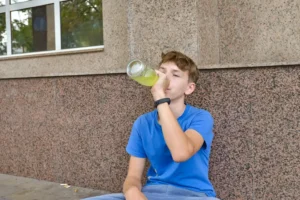Abstinence Violation Effect AVE What It Is & Relapse Prevention Strategies

For example, Bandura, who developed Social Cognitive Theory, posited that perceived choice is key to goal adherence, and that individuals may feel less motivation when goals are imposed by others (Bandura, 1986). Miller, whose seminal work on motivation and readiness for treatment led to multiple widely used measures of SUD treatment readiness and the development of Motivational Interviewing, also argued for the importance of goal choice in treatment (Miller, 1985). Drawing from Intrinsic Motivation Theory (Deci, 1975) and the controlled drinking literature, Miller (1985) argued that clients benefit most when offered choices, both for drinking goals and intervention approaches. A key point in Miller’s theory is that motivation for change is “action-specific”; he argues that no one is “unmotivated,” but that people are motivated to specific actions or goals (Miller, 2006). Broadly speaking, there are at least three primary contexts in which genetic variation could influence liability for relapse during or following treatment. First, in the context of pharmacotherapy interventions, relevant genetic variations can impact drug pharmacokinetics or pharmacodynamics, thereby moderating treatment response (pharmacogenetics).

Exercise addiction
Teasdale and colleagues (1995) have proposed a model of depressive relapse which attempts to explain the process of relapse in depression and also the mechanisms by which cognitive therapy achieves its prophylactic effects in the treatment of depression. It hypothesizes that following recovery, mild states of depression can reactivate depressogenic cycles of cognitive processing similar to those found during a major depressive episode. Counteracting the drinker’s misperceptions about alcohol’s effects is an important part of relapse prevention.
Cognitive Behavioural model of relapse
The RP model proposes that at the cessation of a habit, a client feels self-efficacious with regard to the unwanted behaviour and that this perception of self-efficacy stems from learned and practiced skills3. In a prospective study among both men and women being treated for alcohol dependence using the Situational Confidence Questionnaire, higher self-efficacy scores were correlated to a longer interval for relapse to alcohol use8. The relationship between self-efficacy and relapse is possibly bidirectional, meaning that individuals who are more successful report greater self-efficacy and individuals who have lapsed report lower self-efficacy4.
Outcome expectancies
- Consistent with this idea, EMA studies have shown that social drinkers report greater alcohol consumption and violations of self-imposed drinking limits on days when self-control demands are high [79].
- The client is taught not to struggle against the wave or give in to it, thereby being “swept away” or “drowned” by the sensation, but to imagine “riding the wave” on a surf board.
- Although many developments over the last decade encourage confidence in the RP model, additional research is needed to test its predictions, limitations and applicability.
- For instance, twelve-month relapse rates following alcohol or tobacco cessation attempts generally range from 80-95% [1,4] and evidence suggests comparable relapse trajectories across various classes of substance use [1,5,6].
Twelve-month relapse rates following alcohol or drug cessation attempts can range from 60 to 90 percent, and the AVE can contribute to extended relapses. As a result, the AVE can trigger a cycle of further relapse and continued substance use, since people may turn to substances as a way to cope with the emotional distress. Gillian Steckler is a research assistant for Dr Katie Witkiewitz at Washington State University Vancouver where she also attended and received a bachelor of science degree in psychology. (a) When restrained eaters’ diets were broken by consumption of a high-calorie milkshake preload, they subsequently show disinhibited eating (e.g. increased grams of ice-cream consumed) compared to control subjects and restrained eaters who did not drink the milkshake (figure based on data from [30]). (b) Restrained eaters whose diets were broken by a milkshake preload showed increased activity in the nucleus accumbens (NAcc) compared to restrained eaters who did not consume the preload and satiated non-dieters [64]. Another example is Taylor, who has been doing a wonderful job taking walks and engaging in healthier eating.

Theoretical and Practical Support for the RP Model
These instructions reiterate the importance of stopping alcohol consumption and (safely) leaving the lapse-inducing situation. Lapse management is presented to clients as an “emergency preparedness” kit for their “journey” to abstinence. Many clients may never need to use their lapse-management plan, but adequate preparation can greatly lessen the harm if a lapse does occur. There has been little research on the goals of non-treatment-seeking individuals; however, research suggests that nonabstinence goals are common even among individuals presenting to SUD treatment. Among those seeking treatment for alcohol use disorder (AUD), studies with large samples have cited rates of nonabstinence goals ranging from 17% (Berglund et al., 2019) to 87% (Enggasser et al., 2015). In Europe, about half (44–46%) of individuals seeking treatment for AUD have non-abstinence goals (Haug & Schaub, 2016; Heather, Adamson, Raistrick, & Slegg, 2010).
A mindset shift caused by triggers or stress may lead you to take that drink or start using drugs again. A relapse can be caused by a cascading effect that includes several issues that occur before you begin using again, according to Marlatt. Nevertheless, 40 to 60% of people who once were addicted to a substance and achieved sobriety relapse at some point, based on estimates from the National Institute on Drug Abuse (NIDA). With the right abstinence violation effect help, preparation, and support, you and your loved ones can still continue to build a long-lasting recovery from substance abuse. These patterns can be actively identified and corrected, helping participants avoid lapses before they occur and continue their recovery from substance use disorder. Otherwise, recovering individuals are likely to make the worst of a single mistake and accelerate back through the relapse process as a result.
Emotional Relapse
AA was established in 1935 as a nonprofessional mutual aid group for people who desire abstinence from alcohol, and its 12 Steps became integrated in SUD treatment programs in the 1940s and 1950s with the emergence of the Minnesota Model of treatment (White & Kurtz, 2008). The Minnesota Model involved inpatient SUD treatment incorporating principles of AA, with a mix of professional and peer support staff (many of whom were members of AA), and a requirement that patients attend AA or NA meetings as part of their treatment (Anderson, McGovern, & DuPont, 1999; McElrath, 1997). This model both accelerated the spread of AA and NA and helped establish the https://ecosoberhouse.com/ abstinence-focused 12-Step program at the core of mainstream addiction treatment. This standard persisted in SUD treatment even as strong evidence emerged that a minority of individuals who receive 12-Step treatment achieve and maintain long-term abstinence (e.g., Project MATCH Research Group, 1998). Abstinence effects across different addictive substances, while useful for comparison with behavioral addictions, are beyond the scope of the present review. The extant literature reviewing abstinence effects in relation to withdrawal and relapse for substances is substantial, particularly in relation to tobacco (e.g., Hughes, 2007a, Hughes, 2007b).

One study found that momentary coping reduced urges among smokers, suggesting a possible mechanism [76]. Some studies find that the number of coping responses is more predictive of lapses than the specific type of coping used [76,77]. However, despite findings that coping can prevent lapses there is scant evidence to show that skills-based interventions in fact lead to improved coping [75]. Researchers have long posited that offering goal choice (i.e., nonabstinence and abstinence treatment options) may be key to engaging more individuals in SUD treatment, including those earlier in their addictions (Bujarski et al., 2013; Mann et al., 2017; Marlatt, Blume, & Parks, 2001; Sobell & Sobell, 1995). For example, in AUD treatment, individuals with both goal choices demonstrate significant improvements in drinking-related outcomes (e.g., lower percent drinking days, fewer heavy drinking days), alcohol-related problems, and psychosocial functioning (Dunn & Strain, 2013).

